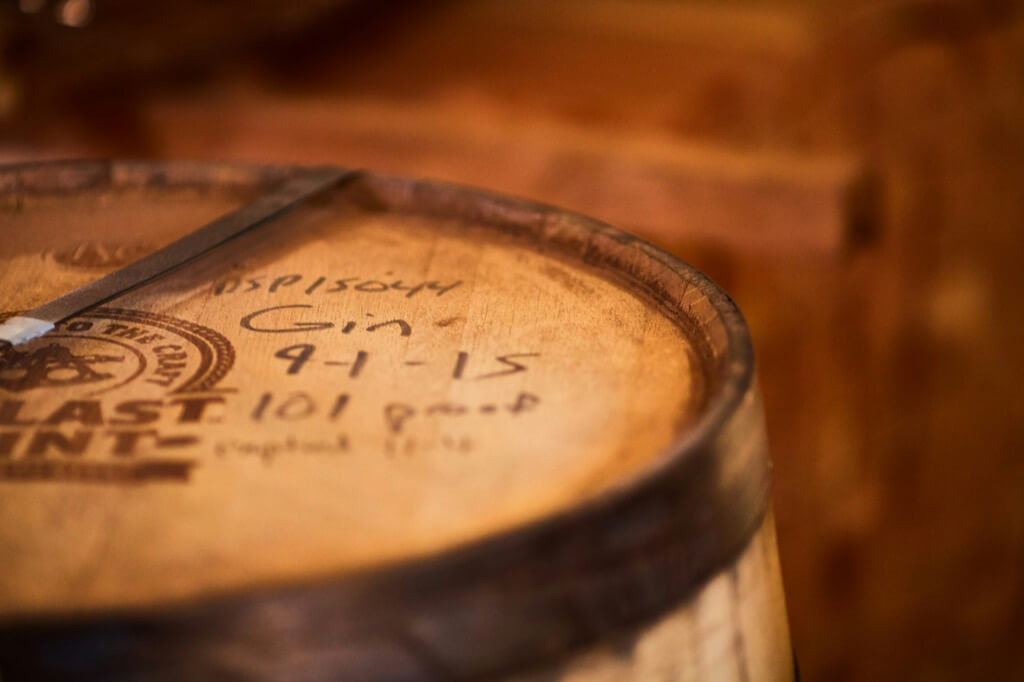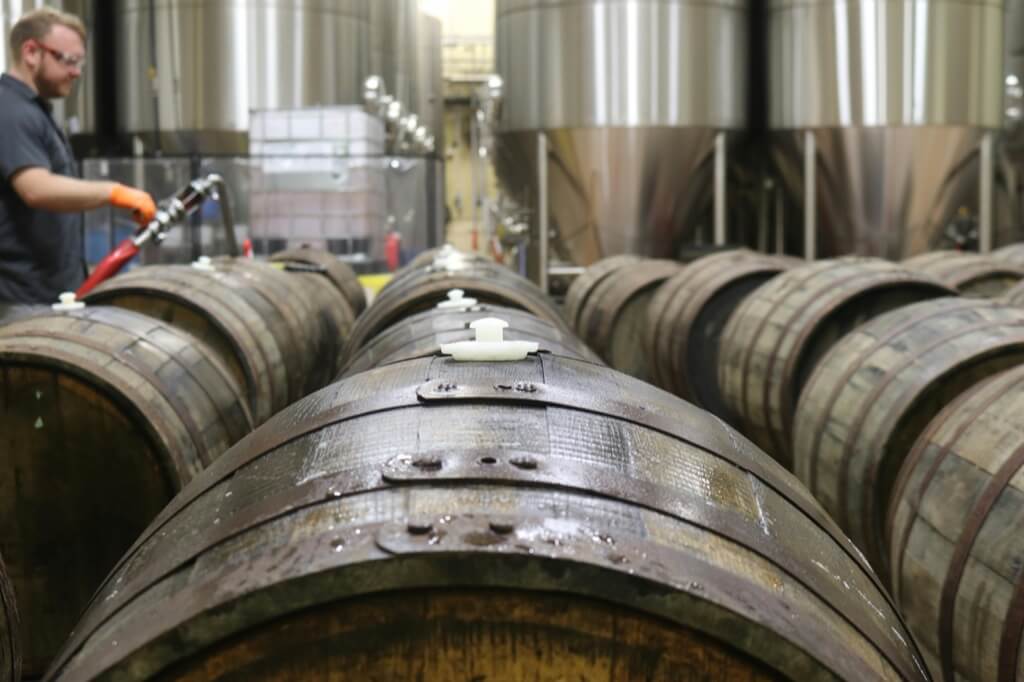In the complex and intricate world of whiskey production, each component, procedure, and phase is essential in determining the end product’s personality. Water stands out among the other ingredients because it’s the essential essence that shapes the spirit of whiskey. It’s not only about adjusting the whiskey to be more approachable when it meets the lips; the strategic addition of water post-maturation is a critical phase in whiskey production. This step is integral for all types of whiskey, with the notable exception of those that boast a barrel-proof label. Traditionally, distilleries have followed a straightforward method of calculating and adding the necessary volume of water to achieve the desired alcohol by volume (ABV) before swiftly moving to bottling. Yet, a transformative approach has been quietly emerging among artisanal distillers who advocate for a more deliberate pace in this process. This technique, known as slow-proofing or slow-dilution, merits a closer look for anyone passionate about the nuances of whiskey.
Unpacking Slow-Proofing
Distillers bring the whiskey to the ideal alcohol by volume (ABV) by slowly adding water to it during the slow-proofing process. Think of it as the meticulously long process of making a stew or curry, when the flavors are allowed to combine and deepen while the ingredients sit and simmer. Slow-proofing is likened to this culinary analogy, emphasizing its potential to soften the intensity of flavors, allowing for a more integrated tasting experience.
Understanding water’s pivotal role in whiskey’s maturation sheds light on the significance of slow-proofing. Water isn’t just a diluent; it’s a transformative agent that interacts with the whiskey’s congeners and alcohol, facilitating a complex dance of chemical reactions over time. These interactions, along with oxidation and the extraction of compounds from the barrel’s wood, play a crucial role in developing the whiskey’s flavor and character. Given that whiskey is typically diluted to about 40% alcohol by volume before bottling, the method of water addition can significantly impact the final profile of the spirit.
The Benefits of Taking It Slow
The slow-proofing method offers a nuanced control over the creation of esters, which are chemical compounds that contribute to the whiskey’s aromatic fruit notes. A rapid addition of water can disrupt the delicate balance of flavors, potentially destroying the very esters that distillers strive to cultivate during fermentation. The is a massive importance put on preserving these subtle esters, which are essential for achieving a harmonious and layered whiskey profile.
Moreover, there’s growing evidence to suggest that slow-proofing might also mitigate saponification, a reaction where water extracts lipids or oils from the distillate, potentially leaving an undesirable soapy taste. By carefully managing the dilution process, distillers can avoid such pitfalls, ensuring a cleaner and more refined flavor.
Challenges and Opportunities
Despite its advantages, the adoption of slow-proofing remains limited, primarily due to logistical and financial considerations. Slow-proofing requires additional space, time, and labor—resources that many larger distilleries find challenging to justify. The precise measurements and careful monitoring increase the complexity of the production process, making it a labor of love suited for small-batch producers dedicated to crafting exceptional whiskey.
However, those who have embraced slow-proofing attest to its transformative impact on the whiskey, claiming it allows flavors to fully integrate and mature before bottling. This method represents a bold departure from traditional practices, potentially setting a new standard for quality and complexity in whiskey production.
Common FAQs on Slow-Proofing in Whiskey Making

What exactly does slow-proofing involve for my whiskey?
Slow-proofing involves gradually introducing water to your whiskey over an extended period, rather than all at once. This process allows for a more controlled integration of water, which can enhance the whiskey’s flavor profile and smoothness. Think of it as slowly adding broth to a risotto, allowing each addition to be fully absorbed and contribute to the dish’s depth of flavor.
How can slow-proofing benefit the flavor of my whiskey?
When you slow-proof your whiskey, you’re allowing for a gentle integration of water, which can prevent the shock and potential disruption of delicate flavor compounds, like esters, that contribute to your whiskey’s unique aroma and taste. This careful dilution can result in a more harmonious and complex flavor profile, highlighting subtle nuances that might otherwise be lost.
Does slow-proofing affect the aging process of whiskey?
While slow-proofing itself is a step that occurs post-aging, before bottling, its effects can influence the perceived maturity of the whiskey. By preserving the integrity of flavor compounds and ensuring a smoother integration of water, slow-proofing can make your whiskey taste as though it has benefited from a more refined aging process.
Can slow-proofing impact the color of my whiskey?
Indirectly, yes. The process of slow-proofing doesn’t directly alter the color of your whiskey, but it can affect the overall sensory experience, including how the color is perceived in the context of flavor and aroma. A well-integrated whiskey, where all components harmonize, can enhance the visual appeal of the spirit by aligning the expectation set by its appearance with the experience of tasting it.
Is slow-proofing necessary for all types of whiskey?
Not necessarily. Slow-proofing is a choice that depends on the desired outcome for your whiskey’s flavor profile and the resources available for production. While it can enhance the complexity and smoothness of the spirit, some styles of whiskey might not benefit significantly from this method, especially those where bold, assertive flavors are preferred. It’s a technique suited for distillers aiming to craft a more nuanced and refined product.
How do I start slow-proofing my whiskey, and what equipment do I need?
To start slow-proofing your whiskey, you’ll need precise measuring tools to accurately add water and control the dilution process. Graduated cylinders, a reliable hydrometer to measure ABV, and a temperature-controlled environment to ensure consistent results are essential. Begin by calculating the desired ABV for your final product, then plan a schedule for gradually adding measured amounts of water, testing the ABV as you go until the target is reached.
Will slow-proofing extend the overall production time for my whiskey?
Yes, slow-proofing will extend the production time, as it involves a gradual addition of water over days or even weeks, depending on your specific process and goals. This additional time should be factored into your production schedule, balanced against the potential benefits of flavor enhancement and product differentiation.
Looking Ahead
As the whiskey industry continues to evolve, the slow-proofing technique raises intriguing questions about the future of distillation and whether more producers will adopt this meticulous approach. The method’s ability to enhance the depth, balance, and overall quality of whiskey suggests a promising avenue for distilleries aiming to differentiate their offerings and appeal to discerning palates.

